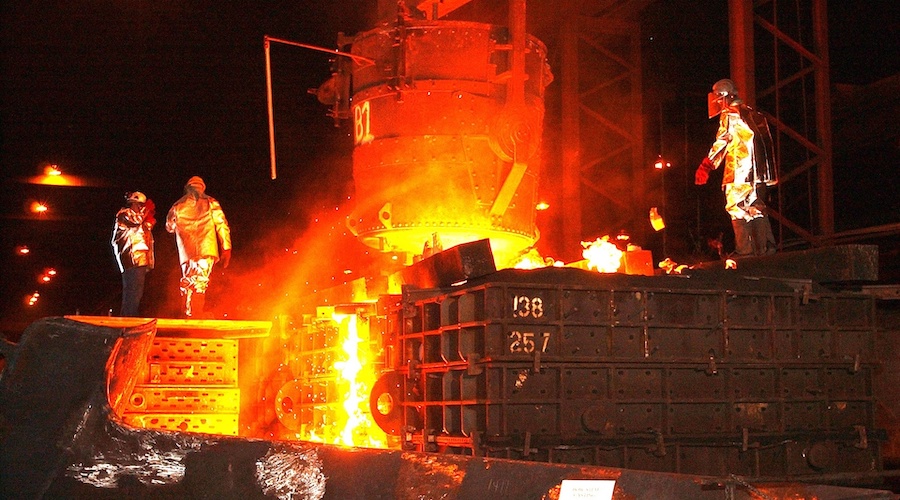New sinter technology could greatly reduce iron, steel making emissions

Researchers at The University of Queensland in Australia have developed a new type of sinter that could accelerate the iron and steelmaking industry’s efforts to reduce carbon emissions.
Sinter is the primary feed material for making iron in a blast furnace. It is created at a sinter plant by blending several materials – most importantly very fine iron ore – into agglomerates under extreme heat to produce a more solid material that can be used in a blast furnace.
“Sinter is an important part of the ironmaking process – it constitutes roughly 70% of the charging material that is added to a blast furnace and therefore ultimately influences the industry’s emissions,” Xiaodong Ma, head of UQ’s Sustainable Minerals Institute, said in a media statement.
“When you talk about carbon and emissions, you are really talking about two stages: the emissions created when the sinter itself is made and then the emissions created by the furnace in which the sinter is used.”
According to Ma – who will present the solution at the 2023 World Mining Congress – the sinter his group developed, which is now the intellectual property of industry partner Shougang Group, addresses both stages but has a particularly significant effect on the amount of coke consumed at the sinter plant, reducing it by about 23%.
“Additionally, at the blast furnace stage, it has improved reducibility and a low slag volume, meaning it performs better and therefore requires the blast furnaces to consume less coking coal,” the researcher said. “These results were proved in our own labs here at The University of Queensland and then again in pilot-scale trials run by the Shougang Group.”
The project is the latest in a series that bring together metal miners and metal makers, both of which have an interest in better understanding their product and reducing carbon emissions.
In addition to the Chinese state-owned steel company, Rio Tinto is part of the project.
“Rio Tinto is the world’s second-largest iron ore miner and their technical marketing team wants to know how their iron ore fines are being used, and to what effect, as well as helping with the downstream carbon emissions related to them,” Ma said.
“The Shougang Group is the world’s ninth largest steel maker, and they are very interested in decreasing carbon emissions across their operations while maintaining performance, as their industry is a major contributor to global emissions.”
More News
{{ commodity.name }}
{{ post.title }}
{{ post.date }}

Comments